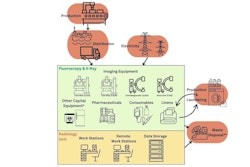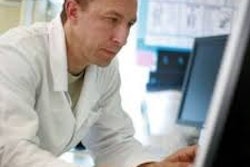Clinical use of imaging equipment accounts for more than 50% of greenhouse gas emissions in the radiology department, with MRI and CT equipment major contributors, researchers have reported.
The finding isn't necessarily surprising. But there are measures that can be taken to reduce these emissions, and performing a "life cycle assessment" is a good way to assess the effect not only of greenhouse gas emissions on the healthcare enterprise but also interventions to mitigate them, according to a team led by Cassandra Thiel, PhD, of Royal Philips in Amsterdam, the Netherlands. The study was published November 26 in Radiology.
"Life cycle assessment (LCA) is a methodology developed in the 1960s to study the environmental impact of products -- from mining raw materials to transporting, producing, installing, using, and disposing them," the group noted. "LCAs establish baseline data on carbon emissions and environmental waste and help analyze the impact of interventions on carbon footprints."
Thiel and colleagues performed an LCA in April 2023 of the diagnostic radiology practice of Vanderbilt University Medical Center in Nashville, TN. The assessment tracked the hospital's overall use of imaging equipment (MRI, CT, x-ray and fluoroscopy, and ultrasound; nuclear medicine, interventional radiology, and mammography were not included); energy use of this equipment; the production and use of other capital equipment (patient monitors, nursing stations, computers, monitors, printers); use of single-use, semidurable, and durable supplies and linens; and production and energy use of onsite data storage. The team reported results in kilotons of CO2 equivalent (kt CO2e) emissions per scan over a 10-year period.
The study found the following:
- Imaging services generated annually 4.6 kt CO2e greenhouse gas emissions, the equivalent of emissions produced by nearly 1,100 gas-powered cars.
- Of these emissions, MRI was responsible for 48% (2.2 of 4.6 kt CO2e) and CT for 24% (1.1 of 4.6 kt CO2e).
- Clinical use of imaging equipment across all modalities made up 54% of departmental greenhouse gas emissions (2.5 of 4.6 kt CO2e).
- Use of PACS made up 11% of departmental greenhouse gas emissions (0.48 of 4.6 kt CO2e).
- Linens production and laundering made up 10% (0.47 of 4.6 kt CO2e).
Although the study findings confirm previous research, there are ways to reduce emissions, according to Thiel and colleagues. They listed four strategies for curbing greenhouse gas emissions in the radiology department:
- Operations and patient flow. Reducing the time imaging equipment is used in ready-to-scan mode when it could be in low-power mode. Reducing repeat scans and exam start time delays.
- Energy interventions. Partner with utility companies and policymakers to incorporate renewable energy sources. Work with manufacturers to reduce energy consumption via technological innovations and workflow improvements.
- Supplies. Use linens more selectively; take a "reduce, reuse, recycle" approach when possible with supplies.
- "Circularity." Make use of hardware or software upgrades; keep equipment in good condition; use refurbished equipment.
A crucial first step in tackling sustainability in radiology is taking the measure of the department's current practices (for example, whether the scheduling of equipment and hours of operation is efficient, standby energy use, and optimization of imaging protocols and contrast media use), wrote James Thrall, MD, of Massachusetts General Hospital in Boston, in an accompanying commentary.
"Such an assessment should reveal which opportunities are the most impactful and also which are the most realistic to achieve for a given set of circumstances," Thrall wrote. "Whatever areas are chosen for each practice … the radiology community can establish a leading role for our specialty in improving environmental resilience and sustainability in health care delivery."
The complete study can be found here.



















